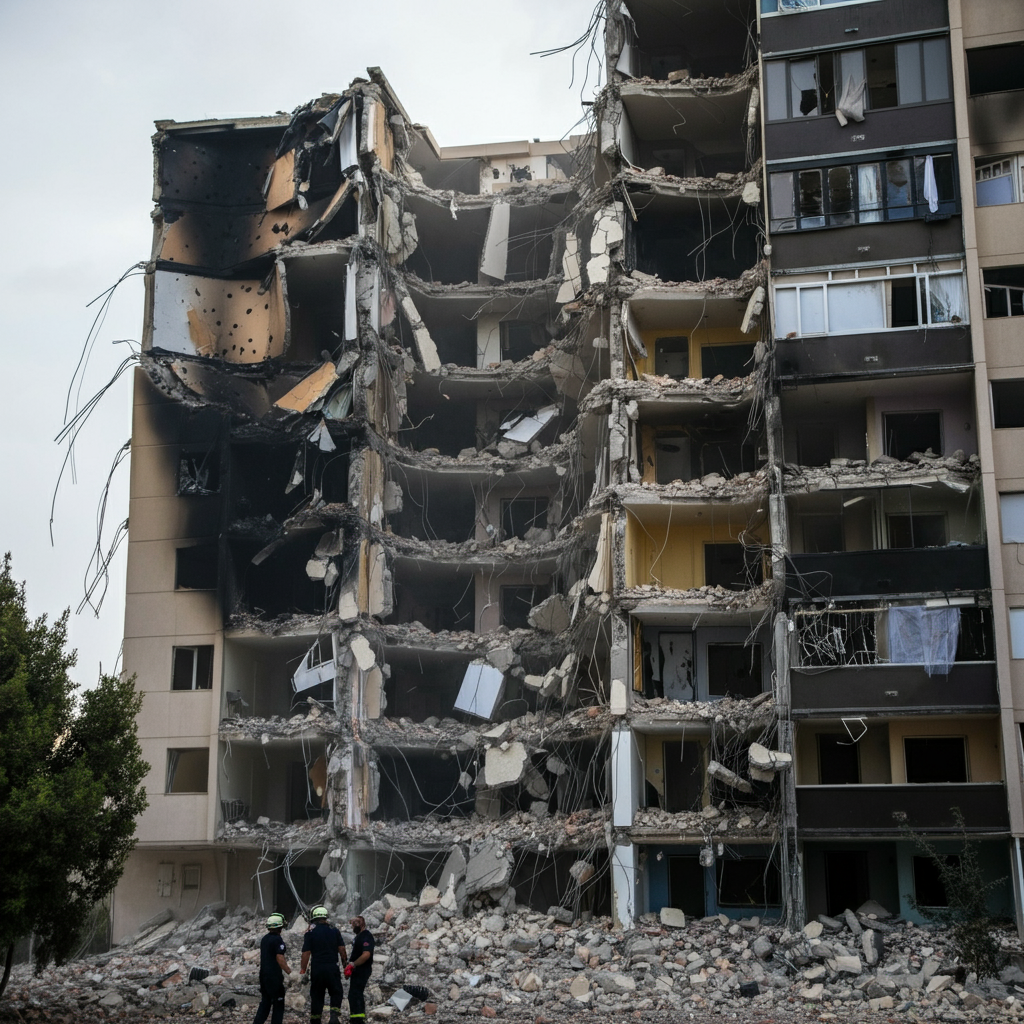The conflict between Israel and Iran has taken a sharp and devastating turn, with both countries experiencing heavy casualties and widespread destruction. Entering its fourth day, the fighting has escalated into one of the most severe confrontations between the two since tensions began decades ago. This blog offers a detailed update on the situation, providing insights into the latest developments, specific incidents, the toll on civilians, historical context, global reactions, and the potential outcomes of this fierce conflict.
Table of Contents
Day 4 Developments
The violence between Israel and Iran has intensified further, leaving unrelenting devastation in its wake.
- Iranian missile strikes on Israel
Overnight, Iranian missile strikes targeted populated areas across Israel, resulting in significant damage and loss of life. Reports indicate at least eight fatalities and dozens injured from these attacks.
- Devastation in Israeli cities
Four people were killed when a missile struck a residential building in Petah Tikva, while three more lives were lost in Haifa. An additional casualty in Bnei Brak occurred when an 80-year-old man lost his life after a shock wave caused his house to collapse.
- Israeli military response
The Israeli military retaliated with precision strikes on multiple military targets in Iran. Notably, a daytime raid on Tehran marked a rare escalation and caused damage to infrastructure, leading to casualties.
- Critical infrastructures affected
One of the key sites hit by Iranian strikes was Israel’s largest oil refinery, located in Haifa Bay, leading to massive infernos. Firefighters and local authorities scrambled to contain the chaos and evacuate those in danger.
The airstrikes have left countless families displaced, with both sides suffering the brunt of warfare.
Specific Incidents
The impact of this conflict has been deeply personal for many, as reflected in harrowing firsthand accounts.
- Missile strike on Petah Tikva
Residents in Petah Tikva were jolted by an explosion that destroyed parts of a high-rise building. Sigal Kovalski, a 47-year-old resident, described emerging from a shelter to find her apartment wrecked, with glass and debris covering the floor.
- Haifa and Bnei Brak under fire
The damage in Haifa included widespread destruction to buildings and infrastructure, while Bnei Brak saw the collapse of homes, leaving residents in shock and despair.
- Oil refinery attack
The Iranian missile strike on Haifa Bay’s refinery led to significant fires and put workers’ lives at risk. Photographs showed blackened skies as emergency services tirelessly worked to contain the disaster.
Casualties and Impact
The loss of life continues to rise, with devastating statistics from both sides.
- Casualties in Israel
At least 21 civilians have lost their lives in Iranian missile strikes since the fighting began. Nearly 100 others have sustained injuries, creating an overwhelming burden for emergency services and hospitals.
- Impact on Iran
Israel’s military retaliation has claimed over 224 lives in Iran, many of whom were linked to the country’s security services. The strikes have also injured more than 1,400 people and caused widespread disruption to daily life.
These events have left both nations grappling with the human cost as families mourn their losses and communities rebuild shattered lives.
Historical Context
The deeply rooted animosity between Israel and Iran has spanned decades, with tensions often boiling over into military confrontations.
- Origins of the feud
The conflict stems from ideological and geopolitical differences, worsened by Iran’s support for groups hostile to Israel and Israel’s opposition to Iran’s nuclear ambitions.
- Key events
Flashpoints, such as Iran’s backing of Hezbollah and clashes over Syria, have kept tensions alive. The ongoing shadow war involving cyberattacks and covert operations has further heightened animosity.
Understanding this history helps contextualize the current situation and highlights the complexity of finding a resolution.
Global Reactions
The escalating conflict has drawn international attention, with widespread calls for de-escalation and peace.
- United States response
The U.S. has condemned the attacks and urged restraint from both sides. Reports suggest diplomatic efforts are underway to prevent the situation from spiraling further.
- Other nations and institutions
The European Union, United Nations, and other global bodies have expressed grave concern over the conflict. Neighboring countries in the Middle East worry about a spillover effect, fearing that violence could destabilize the region.
Efforts to mediate a ceasefire remain ongoing, but with limited progress so far.
Analysis of Geopolitical Implications
What does this escalating conflict mean for the Middle East and the wider world?
- Regional stability
This conflict significantly threatens regional stability, with fears that neighboring countries could be drawn into the fighting. Any escalation risks disrupting energy supplies and exacerbating humanitarian crises.
- Expert opinions
Analysts suggest the conflict reflects deep-seated mistrust and the failure of diplomatic efforts in the past. Without immediate intervention, the crisis could worsen, with long-term consequences for global security and economics.
- Future scenarios
The trajectory of this conflict depends on numerous factors, including international involvement and internal political pressures in both nations. While de-escalation remains a priority, the path to peace is fraught with challenges.
Moving Forward
The Israel-Iran conflict is a stark reminder of the fragility of peace in the Middle East. Each strike, casualty, and act of destruction underscores the urgent need for dialogue and diplomacy.
As the world watches, the hope for reconciliation remains alive, but also the fear of further escalation. By understanding the historical context, the human cost, and the global stakes, we can collectively advocate for a solution that prioritizes peace.

